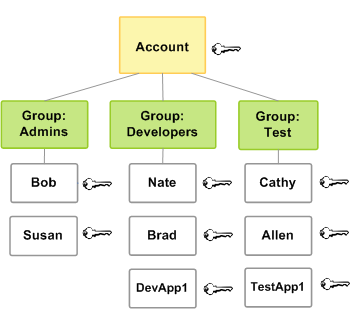The access management portion of AWS Identity and Access Management (IAM) helps you define what a principal entity is allowed to do in an account. A principal entity is a person or application that is authenticated using an IAM entity (user or role). Access management is often referred to as authorization. You manage access in AWS by creating policies and attaching them to IAM identities (users, groups of users, or roles) or AWS resources. A policy is an object in AWS that, when associated with an identity or resource, defines their permissions. AWS evaluates these policies when a principal uses an IAM entity (user or role) to make a request. Permissions in the policies determine whether the request is allowed or denied.
Policies and Accounts
If you manage a single account in AWS, then you define the permissions within that account using policies. If you manage permissions across multiple accounts, it is more difficult to manage permissions for your users. You can use IAM roles, resource-based policies, or access control lists (ACLs) for cross-account permissions.
Policies and users
IAM users are identities in the service. When you create an IAM user, they can’t access anything in your account until you give them permission. You give permissions to a user by creating an identity-based policy, which is a policy that is attached to the user or a group to which the user belongs. The following example shows a JSON policy that allows the user to perform all Amazon DynamoDB actions (dynamodb:*) on the Books table in the 123456789012 account within the us-east-2 Region.
{
“Version”: “2012-10-17”,
“Statement”: {
“Effect”: “Allow”,
“Action”: “dynamodb:*”,
“Resource”: “arn:aws:dynamodb:us-east-2:123456789012:table/Books”
}
}
After you attach this policy to your IAM user, the user only has those DynamoDB permissions. Most users have multiple policies that together represent the permissions for that user.
Policies and Groups
You can organize IAM users into IAM groups and attach a policy to a group. In that case, individual users still have their own credentials, but all the users in a group have the permissions that are attached to the group. Use groups for easier permissions management

Identity based and Resource based Policies
Identity-based policies are permissions policies that you attach to an IAM identity, such as an IAM user, group, or role. Resource-based policies are permissions policies that you attach to a resource such as an Amazon S3 bucket or an IAM role trust policy.
